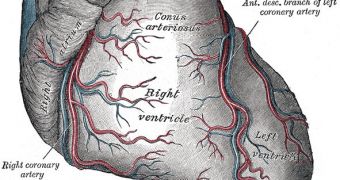Investigators from the United States are convinced that they are now able to understand, identify and prevent sudden, unexpected adverse cardiac events, following the publication of the conclusions of a new scientific research paper. The work appears in the most prestigious medical journal in the world.
The Providing Regional Observations to Study Predictors of Events in the Coronary Tree (PROSPECT) medical trial was only concluded recently. Scientists who helped conduct it say that the experiments conducted during the research gave more insight into vulnerable plaques that cause heart problems.
According to the investigators, undesirable cardiac events are caused by some of these plaques. As such, finding them even before they begin developing is a critical step towards promoting the reduction of the incidence of heart conditions in the general population.
These structures can be identified in the coronary tree even before they start assembling, by using a variety of imaging techniques. This investigation is the first prospective natural history study of atherosclerosis.
PROSPECT used multi-modality imaging to collect details of the coronary tree, which were published in the January 20 issue of the New England Journal of Medicine (NEJM). The research covered no less than 700 patients, Science Daily reports.
“As a result of the PROSPECT trial, we are closer to being able to predict – and therefore prevent – sudden, unexpected adverse cardiac events,” explains scientist Gregg W. Stone, MD.
The expert holds an appointment as a professor of medicine at the Columbia University College of Physicians and Surgeons, and was also the principal investigator on the new study.
He works as the director of Cardiovascular Research and Education at the Center for Interventional Vascular Therapy, which is based at the New York-Presbyterian Hospital / Columbia University Medical Center.
“These results mean that using a combination of imaging modalities, including IVUS [grayscale intravascular ultrasound] to identify lesions with a large plaque burden and/or small lumen area, and VH-IVUS [radiofrequency IVUS] to identify a large necrotic core without a visible cap (a thin cap fibroatheroma) identifies the lesions that are at especially high risk of causing future adverse cardiovascular events,” Dr. Stone explains.
All the 700 patients in the trials suffered from acute coronary syndromes (ACS), and they were all investigated with three-vessel, multi-modality, intra-coronary, imaging techniques – angiography, IVUS, and VH-IVUS.

 14 DAY TRIAL //
14 DAY TRIAL //